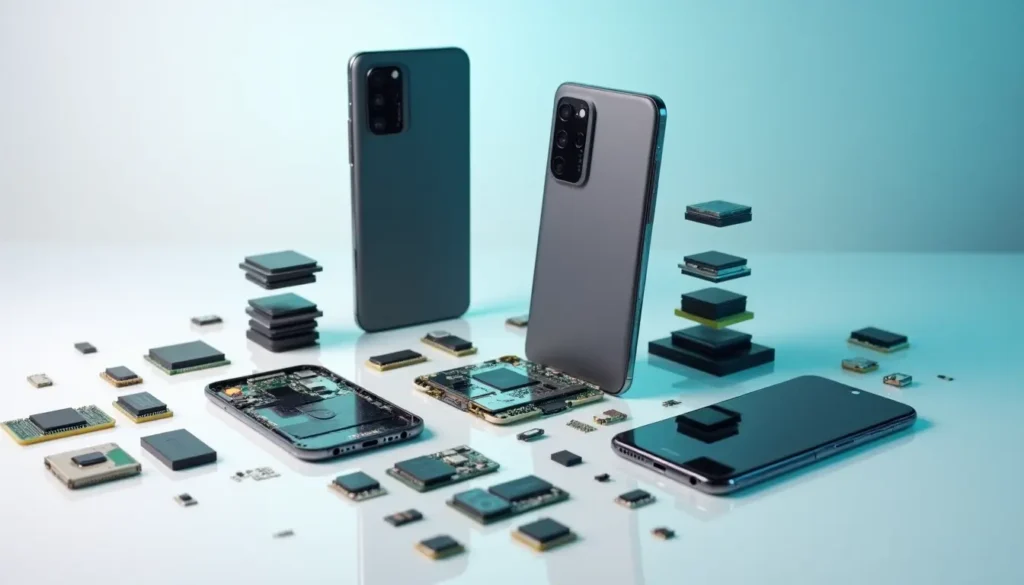Flagship smartphones now cost over $1,000, yet HMD’s latest $75 Android phone challenges our perception of budget devices. This price difference becomes even more striking when you consider that 3.5 billion people survive on less than $6.85 daily. HMD’s Key brings smartphone technology within reach of these budget-conscious consumers.
HMD Key stands as the most important breakthrough in affordable smartphone technology. This best budget Android phone comes equipped with Android 14 Go and sports a 6.52-inch display that delivers basic features at a fraction of the cost. The device packs a 4,000mAh battery that lasts up to 47 hours and offers 32GB of storage. These features show a radical alteration in what best affordable Android phones can achieve at this price point.
Let’s get into the economics, technology, and market forces that enable these ultra-affordable smartphones in 2025. Understanding component costs and manufacturing strategies will reveal how companies can produce such competitively priced smartphones while maintaining core functionality.
Understanding the Economics of Budget Android Phones
Budget Android phone manufacturers follow specific economic principles to create their devices. The component costs determine these phones’ final price.
The System-on-Chip (SoC) stands out as one of the most important expenses in phone manufacturing. The high-end Snapdragon 8 Elite costs around $200 per unit. Budget phones use Unisoc chips that cost less than $20. Memory components are a big deal as it means they affect the overall cost:
| Component | Approximate Cost |
|---|---|
| 2GB RAM | $11 |
| 32GB Storage | $13 |
| Display Module | Under $10 |
Supply chain optimization helps manufacturers cut costs. The hardware components make up 35-45% of the retail price. Manufacturers focus on these key areas:
- Bulk production to leverage economies of scale
- Multiple supply centers with connected regional warehouses
- Lower marketing costs compared to premium brands
Breakthroughs in manufacturing have made cheap cell phones possible. Assembly costs have dropped to historic lows. Global integration of smartphone manufacturing has brought prices down further. Xiaomi shows this efficiency by keeping a 5% profit margin on hardware. They build product ecosystems that ensure long-term sustainability.
Component costs have reached their practical minimums, especially when dealing with emerging markets where phone affordability remains a barrier. To cite an instance, Sub-Saharan African operators offer device financing plans and strategic collaborations with manufacturers to make budget Android phones available.
The Technology Behind Best Budget Android Phones
Let’s head over to the tech that powers the best budget Android phones. These components show how manufacturers keep prices low without cutting corners on key features.
Essential Hardware Components
The System-on-Chip (SoC) sits at the heart of every best cheap cell phone. While high-end devices use the Snapdragon 8 Elite costing around $200, budget phones use Unisoc chips that cost less than $20. The memory setup has 2GB RAM at $11 and 32GB storage at $13.
Software Optimization Techniques
Manufacturers use several smart strategies to boost performance on limited hardware:
- Android Go edition for devices with less than 2GB RAM
- Virtual RAM technology that uses storage space as extra memory
- Background process management and resource allocation
Performance vs Cost Trade-offs
Budget devices make smart compromises to stay affordable. Unisoc chips in these phones run on older architecture – the SC9832E uses Cortex-A53 cores from 2012, while the T606 runs on Cortex-A55 from 2017. In spite of that, these processors handle day-to-day tasks well.
Display technology has come a long way. Modern budget Android phones now feature 6.5-inch Super AMOLED displays refreshing at 90Hz. This gives users a much better visual experience than older budget models.
Battery life is vital in best cheap cell phones. Current models have 4,000-5,000mAh batteries that provide enough power for daily use. Smart balance between hardware capabilities and power use helps these devices last through a full day.
Market Forces and Business Strategies
The global smartphone market shows some fascinating trends that shape the future of best budget Android phones. Economic uncertainties have made emerging markets the main battleground for affordable smartphones.
Emerging Markets Effect
Chinese vendors like Xiaomi, OPPO, and vivo lead the recovery in emerging markets. Southeast Asian countries have become vital markets, though manufacturers struggle with fluctuating exchange rates. The smartphone market sees a 48.5% share through OEM distribution channels.
Competition Analysis
Market competition shows some clear patterns:
| Manufacturer | Market Position |
|---|---|
| Samsung | Market leader with premium segment growth |
| Apple | 5.3% YoY growth in shipments |
| Chinese Brands | Aggressive expansion in emerging markets |
Profit Models and Sustainability
Several green strategies stand out in the market:
- OEM’s mutually beneficial alliances for customized smartphone models
- Regular launches with tariff revisions by manufacturers
- Investment in green practices and modular design
The Android platform has created over 1.2 million jobs in Europe. Mobile economy adds more than USD 3.00 trillion to global GDP across 236 countries. All but one of these Android manufacturers work with thin profit margins – Samsung being the exception.
The best cheap cell phones market shows strong growth potential. Android should grow 7.1% in 2024, while iOS trails at 0.8%. New technologies like 5G and AI boost user experience, though keeping phones affordable remains challenging.
Quality and Consumer Protection Concerns
The most important aspects of quality assurance need attention when it comes to best budget android phones. Quality control needs heavy investment because bug fixes cost 100 units during development compared to 10,000 units after release.
Quality Control Processes
Mobile phone quality inspection happens in multiple steps. Phone makers test everything thoroughly with software checks, battery performance tests, and visual workmanship inspections. Samsung uses an 8-Point Battery Safety Check to make their devices reliable.
Warranty and Support Services
Best cheap cell phones come with different warranty options:
- Standard manufacturer warranty: 90 days to 24 months coverage
- Extended warranty options: Additional 1-3 years protection
- Advance Exchange Service: Next-business-day device replacement
Long-term Reliability Issues
Best budget android phones face several reliability challenges. The Unisoc chips in these devices use old technology from 2012-2017, but manufacturers add various safety features. Our research shows that quality checks happen at every tech stage from development to release and operation.
Samsung’s Quality Management System leads the world and follows ISO 9001 standards for best cheap cell phones. The Federal Trade Commission keeps watch over mobile industry developments to shield consumers from unfair practices.
Final Thoughts
Budget Android phones show that quality smartphones don’t need to cost a fortune. Our detailed analysis found how manufacturers hit this remarkable price point and still keep core features intact.
The component costs paint an interesting picture. Simple Unisoc chips that cost under $20 take the place of pricier Snapdragon processors. Optimized RAM and storage setups keep prices down without affecting how you use the phone. On top of that, manufacturers stick to tight profit margins and use efficient supply chains to make these phones affordable.
Market pressure, especially from emerging economies, pushes state-of-the-art features in budget phones. Chinese companies lead the way, while Samsung and other 10-year-old players still compete well. Quality control stays crucial – manufacturers run full testing procedures and offer warranty services to protect their customers.
Android Go edition changes everything for these devices and shows how good software can make up for modest hardware. These phones might use older tech, but they handle daily tasks well. Their 4,000-5,000mAh batteries provide impressive runtime.
The budget smartphone segment will keep growing as technology moves forward and manufacturing gets more streamlined. More people worldwide will get access to smartphone technology, which helps close the digital gap.


